Why Did They Call New York The Big Apple? This iconic nickname, synonymous with New York City, sparks curiosity about its origin and meaning. At WHY.EDU.VN, we unravel the story behind this famous moniker, tracing its roots from horse racing to jazz culture and beyond, providing a comprehensive answer for those seeking reliable knowledge and a deeper understanding of the city’s vibrant history and its enduring appeal. Let’s explore the historical context, cultural impact, and the advertising campaign that cemented “The Big Apple” in the city’s identity.
1. The Genesis of “The Big Apple”
The nickname “The Big Apple” wasn’t born overnight. Its origin can be traced back to the early 20th century, specifically the 1920s. It’s a story that involves horse racing, jazz music, and a clever advertising campaign. Let’s delve into the details of its evolution.
1.1 Horse Racing Roots
The earliest known usage of “Big Apple” is linked to horse racing. In the 1920s, New York City’s numerous racetracks offered substantial prizes, often referred to as “big apples.” These prizes were highly coveted, making the city a prime destination for jockeys and those involved in the racing circuit.
- John J. Fitz Gerald: A sportswriter for the New York Morning Telegraph, Fitz Gerald is credited with popularizing the term. He overheard African American stablehands in New Orleans using “Big Apple” to refer to New York City’s racetracks.
- “Around the Big Apple”: Fitz Gerald adopted the term for his column, “Around the Big Apple,” which focused on horse racing in New York. This exposure helped the nickname gain traction.
1.2 Jazz Age Influence
While horse racing played a role, the term “Big Apple” also found its way into the jazz scene. In the 1930s, jazz musicians began using the term to refer to New York City, viewing it as the ultimate destination for their careers.
- Harlem’s “Big Apple” Nightclub: A nightclub named “Big Apple” opened in Harlem in 1934, further cementing the connection between the city and the nickname.
- Dance Craze: In 1937, a “Big Apple” dance craze swept Harlem and the nation, increasing the term’s popularity. The dance, characterized by its lively and energetic movements, symbolized the vibrant culture of New York City.
1.3 Advertising Campaign of the 1970s
Despite its early usage, “The Big Apple” didn’t become the city’s official nickname until the 1970s. A tourism campaign played a crucial role in solidifying its place in New York City’s identity.
- Reviving the City’s Image: In the late 1960s and early 1970s, New York City faced challenges such as rising crime rates and economic difficulties. To combat this negative image, the New York Convention and Visitors Bureau launched a campaign to boost tourism.
- Charles Gillett and Bill Phillips: Charles Gillett, president of the bureau, and ad executive Bill Phillips spearheaded the campaign, aiming to rebrand the city as an attractive destination.
- “The Big Apple” Campaign: The campaign centered around the “Big Apple” nickname, using images of red apples in advertisements to promote a positive and vibrant image of the city. Slogans like “Take a Bite of the Big Apple” encouraged tourists to visit.
2. New York City Before “The Big Apple”
Before New York City was known as “The Big Apple,” it had a rich history and other nicknames. Understanding its earlier names and origins provides a broader context for appreciating the evolution of its identity.
2.1 New Amsterdam
In the 17th century, New York City was originally settled by the Dutch and named New Amsterdam. This name reflected the city’s Dutch heritage and its role as a major trading hub.
- Dutch Settlement: The Dutch West India Company established New Amsterdam in 1624 as a trading post. The colony quickly became a center for commerce and immigration.
- Capital of New Netherland: New Amsterdam served as the capital of the New Netherland colony, attracting settlers from various European countries. The Dutch prioritized fur trade, which became a vital part of the local economy.
2.2 New York
In 1664, the English took control of New Amsterdam and renamed it New York in honor of the Duke of York. This marked a significant transition in the city’s history.
- English Conquest: The English conquest of New Amsterdam was a pivotal moment, leading to the city’s renaming and its integration into the British Empire.
- Duke of York: The city was named after the Duke of York, who later became King James II of England. This renaming symbolized the shift in power and the beginning of a new era for the city.
3. Other New York City Nicknames
While “The Big Apple” is the most famous, New York City has acquired several other nicknames throughout its history, each reflecting different aspects of its character.
3.1 The City That Never Sleeps
This nickname highlights New York City’s vibrant nightlife and 24/7 activity. The city is known for its bustling streets, late-night restaurants, and endless entertainment options.
- Constant Activity: The phrase “The City That Never Sleeps” captures the relentless energy of New York City, where something is always happening, day or night.
- Cultural Significance: This nickname is often used to describe the city’s dynamic cultural scene, its diverse population, and its constant state of flux.
3.2 Empire City
“Empire City” reflects New York City’s economic and political power, as well as its impressive skyline and iconic landmarks.
- Economic Powerhouse: New York City is a global center for finance, commerce, and trade, making it an economic powerhouse.
- Iconic Landmarks: The city’s skyline, dominated by landmarks such as the Empire State Building and the Chrysler Building, symbolizes its grandeur and ambition.
3.3 Gotham
“Gotham” is a literary nickname for New York City, popularized by Washington Irving in the 19th century. It adds a sense of mystery and intrigue to the city’s image.
- Washington Irving: Irving used “Gotham” in his satirical writings to poke fun at New York City’s society and politics.
- Batman Connection: The nickname gained further popularity through the Batman comics, where Gotham City serves as the fictional setting for the superhero’s adventures.
4. The Enduring Appeal of “The Big Apple”
“The Big Apple” has become more than just a nickname; it’s a symbol of New York City’s allure and its status as a global hub for culture, innovation, and opportunity.
4.1 Cultural Significance
The nickname represents the city’s cultural diversity, its vibrant arts scene, and its role as a trendsetter in fashion, music, and entertainment.
- Melting Pot: New York City is a melting pot of cultures, attracting people from all over the world who contribute to its unique character.
- Arts and Entertainment: The city is home to world-renowned museums, theaters, and music venues, making it a cultural mecca.
4.2 Economic and Professional Opportunities
“The Big Apple” symbolizes the city’s vast economic opportunities, attracting ambitious individuals seeking to advance their careers in various fields.
- Global Hub: New York City is a global hub for finance, media, and technology, offering a wide range of job opportunities.
- Career Advancement: The city is known for its competitive job market and its potential for career advancement, making it a magnet for talented professionals.
4.3 Tourism and Branding
The nickname has been instrumental in branding New York City as a must-visit destination, attracting tourists from around the globe who want to experience its unique energy and attractions.
- Iconic Landmarks: New York City is home to iconic landmarks such as the Statue of Liberty, Times Square, and Central Park, drawing millions of tourists each year.
- Vibrant Atmosphere: The city’s vibrant atmosphere, its diverse neighborhoods, and its endless array of activities make it a popular destination for travelers.
5. How WHY.EDU.VN Can Help You Explore New York City’s Rich History and Culture
At WHY.EDU.VN, we understand the importance of accessing reliable and comprehensive information. Whether you’re a student, a researcher, or simply someone curious about the world, our platform is designed to provide you with accurate answers and in-depth insights.
- Detailed Explanations: We offer detailed explanations of complex topics, breaking them down into easily understandable concepts.
- Diverse Perspectives: Our content includes diverse perspectives and historical context, ensuring a well-rounded understanding of the subject matter.
- Expert Insights: We provide access to expert insights and credible sources, ensuring the information you receive is accurate and trustworthy.
6. The Lasting Legacy of “The Big Apple”
The story of “The Big Apple” is a testament to the power of nicknames and branding in shaping a city’s identity. It’s a story that continues to evolve, with new chapters being written every day.
6.1 A Symbol of Resilience
The nickname “The Big Apple” has become a symbol of New York City’s resilience and its ability to overcome challenges. From its early days as a Dutch trading post to its current status as a global hub, the city has always found ways to reinvent itself and thrive.
6.2 A Source of Pride
For New Yorkers, “The Big Apple” is a source of pride, representing the city’s unique character and its enduring appeal. It’s a nickname that embodies the spirit of innovation, diversity, and ambition that defines New York City.
6.3 A Global Icon
“The Big Apple” has become a global icon, recognized and celebrated around the world. It’s a nickname that transcends language and culture, representing the universal allure of New York City.
7. Exploring the Top 5 Search Intents Behind “Why Did They Call New York The Big Apple?”
Understanding the search intent behind a query helps in providing targeted and relevant information. Here are five primary search intents for users asking “Why did they call New York the Big Apple?”
- Historical Origin: Users want to know the historical roots of the nickname, tracing back to its earliest usage and understanding how it originated.
- Meaning and Symbolism: Users are curious about what the nickname “Big Apple” symbolizes and how it reflects New York City’s identity and character.
- Cultural Context: Users aim to understand the cultural influences, such as jazz music and horse racing, that contributed to the popularization of the nickname.
- Advertising Campaign: Users seek information about the 1970s advertising campaign that officially adopted “The Big Apple” as the city’s nickname and its impact on tourism.
- Comparison to Other Nicknames: Users want to know how “The Big Apple” compares to other nicknames for New York City, such as “The City That Never Sleeps” and “Empire City,” and their respective meanings.
8. Delving Deeper: Answering Related Questions About New York City
To provide a more comprehensive understanding, let’s explore some frequently asked questions related to New York City and its history.
8.1 What were some of the challenges New York City faced in the late 1960s and early 1970s?
In the late 1960s and early 1970s, New York City faced significant challenges, including rising crime rates, economic recession, and urban decay. These issues led to a negative perception of the city, prompting efforts to revitalize its image.
8.2 How did the Dutch influence New York City’s early development?
The Dutch established New Amsterdam in 1624, laying the foundation for what would become New York City. Their focus on trade, immigration, and religious tolerance contributed to the city’s diverse and cosmopolitan character.
8.3 What role did jazz music play in popularizing “The Big Apple” nickname?
In the 1930s, jazz musicians began using “The Big Apple” to refer to New York City, viewing it as the ultimate destination for their careers. This association helped the nickname gain traction in popular culture.
8.4 Who was Charles Gillett, and what was his contribution to the “Big Apple” campaign?
Charles Gillett was the president of the New York Convention and Visitors Bureau. He spearheaded the “Big Apple” campaign in the 1970s, aiming to rebrand the city as an attractive tourist destination.
8.5 How did the advertising campaign use the image of apples to promote New York City?
The advertising campaign used images of red apples to promote a positive and vibrant image of New York City. Slogans like “Take a Bite of the Big Apple” encouraged tourists to visit and experience the city’s unique attractions.
8.6 Why was John J. Fitz Gerald important to the history of “The Big Apple” nickname?
John J. Fitz Gerald, a sportswriter for the New York Morning Telegraph, popularized the term “Big Apple” through his column, “Around the Big Apple,” which focused on horse racing in New York.
8.7 How did the 1937 “Big Apple” dance craze contribute to the nickname’s popularity?
The “Big Apple” dance craze swept Harlem and the nation in 1937, further increasing the nickname’s popularity. The dance, characterized by its lively and energetic movements, symbolized the vibrant culture of New York City.
8.8 What are some of the iconic landmarks in New York City that attract tourists?
New York City is home to iconic landmarks such as the Statue of Liberty, Times Square, Central Park, the Empire State Building, and the Brooklyn Bridge. These attractions draw millions of tourists each year.
8.9 How does New York City’s economic power contribute to its nickname, “Empire City”?
New York City is a global center for finance, commerce, and trade, making it an economic powerhouse. This economic dominance contributes to its nickname, “Empire City.”
8.10 What does the nickname “The City That Never Sleeps” signify about New York City?
“The City That Never Sleeps” highlights New York City’s vibrant nightlife and 24/7 activity. The city is known for its bustling streets, late-night restaurants, and endless entertainment options.
9. New York City’s Nickname Timeline
| Period | Nickname | Origin and Significance |
|---|---|---|
| 17th Century | New Amsterdam | Named by Dutch settlers after Holland’s largest city; served as a major trading hub. |
| 1664 | New York | Renamed by the English after the Duke of York following their conquest of New Amsterdam. |
| Early 20th C. | The Big Apple | Popularized by John J. Fitz Gerald, referring to New York City’s horse racing circuits; later adopted by jazz musicians to signify the ultimate destination. |
| Contemporary | Empire City | Reflects New York City’s economic and political power, as well as its impressive skyline. |
| Contemporary | City That Never Sleeps | Highlights New York City’s vibrant nightlife and 24/7 activity. |
| Contemporary | Gotham | A literary nickname popularized by Washington Irving; adds a sense of mystery and intrigue to the city’s image. |
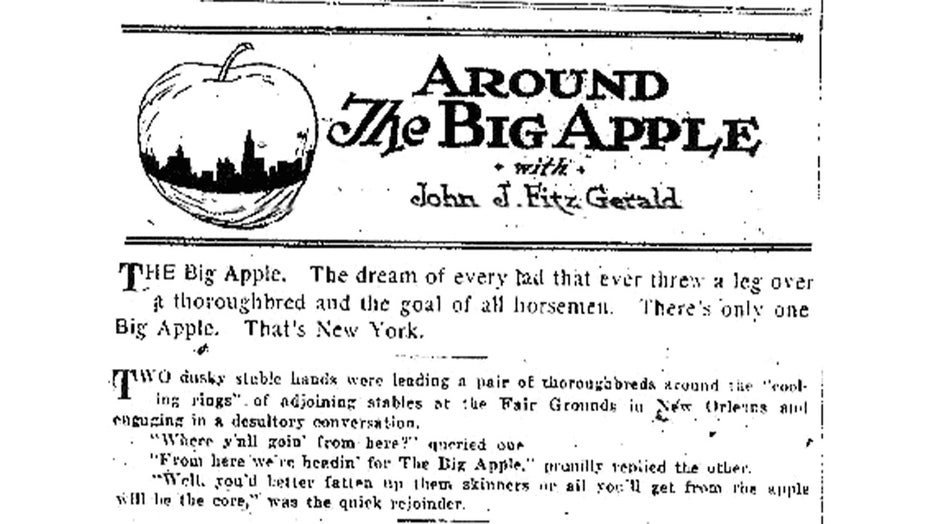
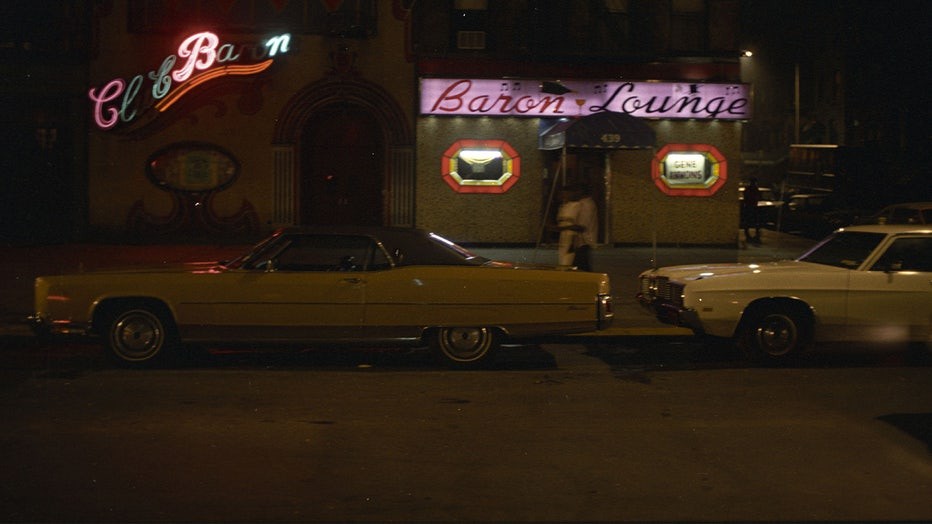
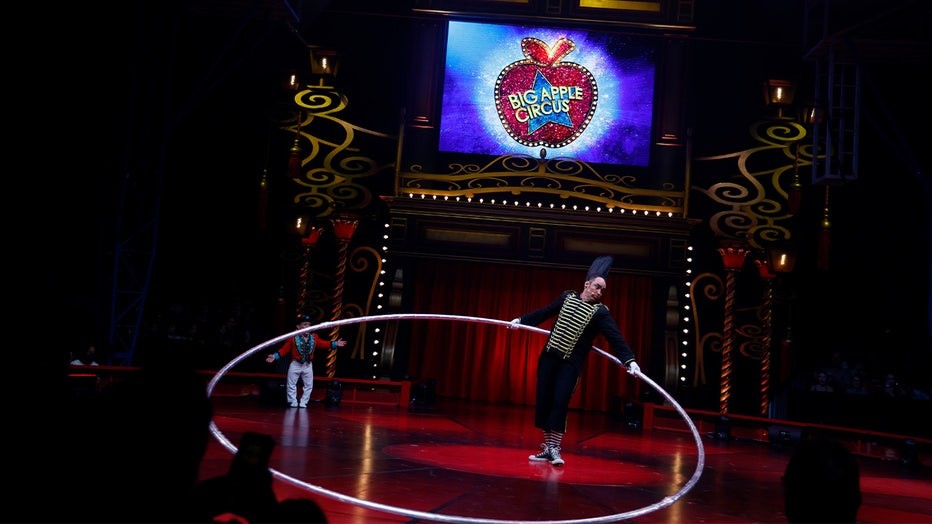
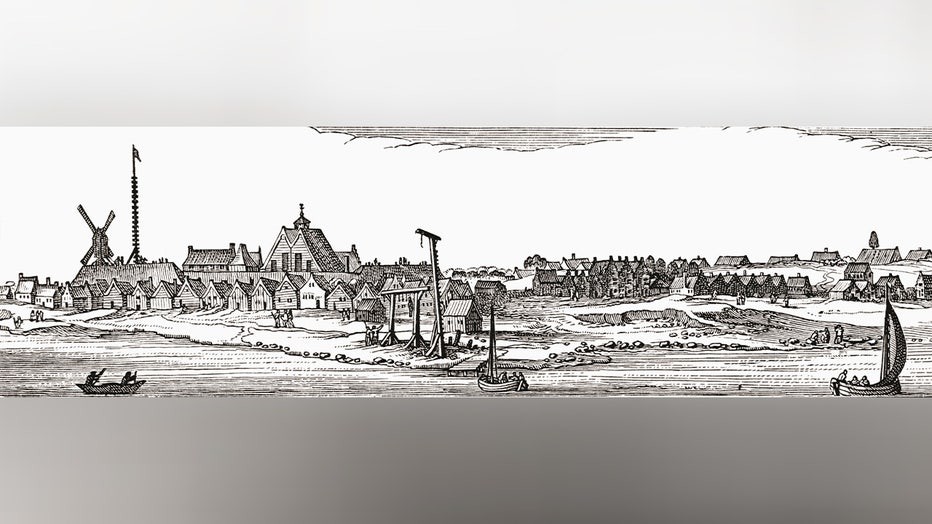
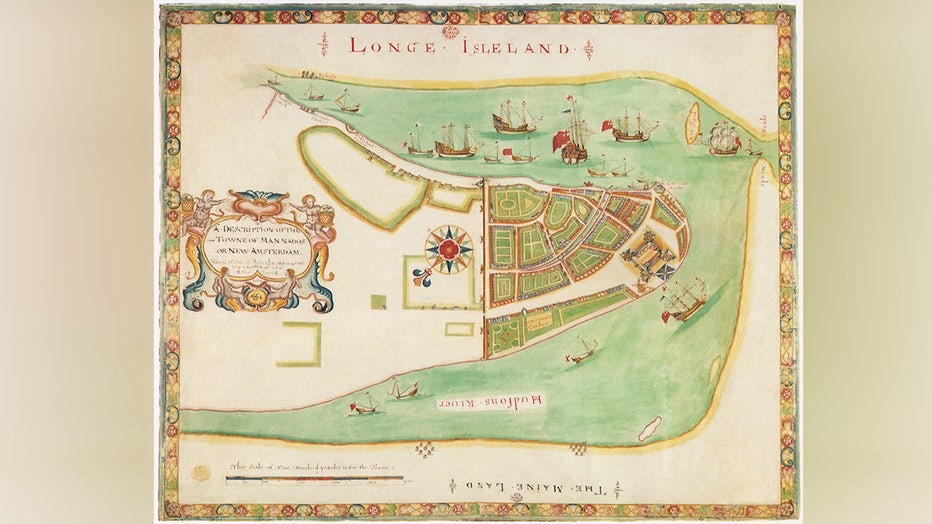
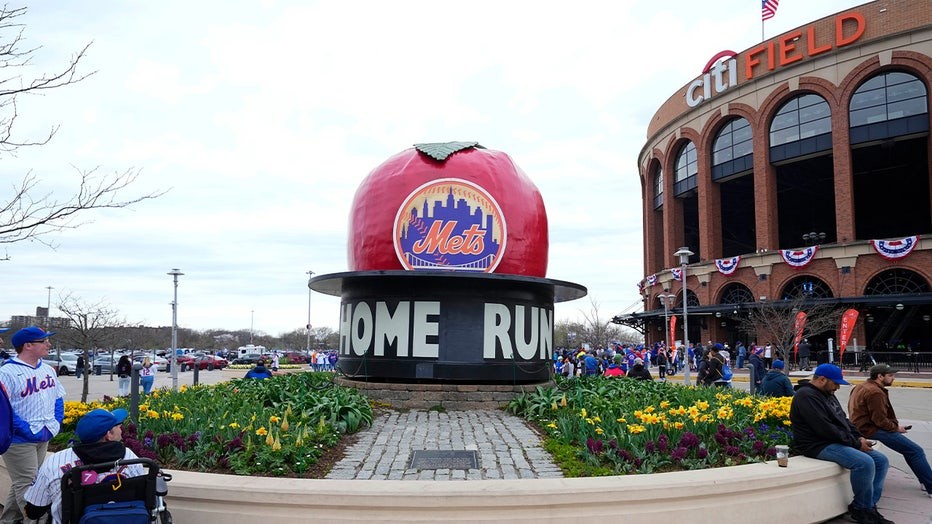
10. Discover More at WHY.EDU.VN
Do you still have burning questions about New York City’s history, culture, or anything else? Don’t let your curiosity go unanswered. At WHY.EDU.VN, we’re dedicated to providing you with accurate, comprehensive, and engaging answers to all your questions.
10.1 Why Choose WHY.EDU.VN?
- Expert Knowledge: Our team of experts is committed to delivering well-researched and reliable information.
- Comprehensive Coverage: We cover a wide range of topics, from history and science to culture and current events.
- Easy-to-Understand Explanations: We break down complex topics into easy-to-understand concepts, making learning accessible to everyone.
- Community Engagement: Join our community of curious minds and share your questions and insights.
10.2 How to Get Started
- Visit our website: Go to WHY.EDU.VN and explore our vast collection of articles and answers.
- Ask a question: If you can’t find what you’re looking for, submit your question, and our experts will provide a detailed answer.
- Join the community: Connect with other curious individuals, share your knowledge, and participate in discussions.
10.3 Contact Us
Have more questions or need further assistance? Reach out to us:
- Address: 101 Curiosity Lane, Answer Town, CA 90210, United States
- WhatsApp: +1 (213) 555-0101
- Website: WHY.EDU.VN
Don’t let your curiosity fade away. Visit why.edu.vn today and unlock a world of knowledge and discovery.
FAQ: Unveiling More About New York City and Its Nickname
To further satisfy your curiosity, here are some frequently asked questions about New York City and its iconic nickname, “The Big Apple.”
-
Is “The Big Apple” still a relevant nickname for New York City today?
Yes, “The Big Apple” remains a highly relevant and widely used nickname for New York City, symbolizing its cultural significance, economic opportunities, and global appeal. -
Did other cities ever use the nickname “Big Apple” before New York City?
While the term “big apple” was sometimes used generically to refer to a large or important place, its specific association with New York City became solidified through the efforts of John J. Fitz Gerald and the subsequent advertising campaign. -
How did the rise of mass media contribute to the popularization of “The Big Apple” nickname?
The rise of mass media, including newspapers, radio, and television, played a significant role in spreading awareness of “The Big Apple” nickname, helping it reach a wider audience and become synonymous with New York City. -
What impact did the “I Love New York” campaign have on the city’s image, compared to the “Big Apple” campaign?
The “I Love New York” campaign, launched in the late 1970s, focused on promoting the state of New York as a whole, while the “Big Apple” campaign specifically targeted New York City. Both campaigns contributed to improving the city’s image and attracting tourists. -
Were there any controversies or criticisms associated with the use of “The Big Apple” nickname?
While “The Big Apple” nickname was generally well-received, some critics argued that it oversimplified the complex realities of New York City, potentially overshadowing its challenges and inequalities. -
How does the story of “The Big Apple” reflect the broader trends in urban branding and marketing?
The story of “The Big Apple” reflects broader trends in urban branding and marketing, highlighting the importance of creating a positive and memorable image to attract tourists, businesses, and residents. -
Did the September 11 attacks affect the use or perception of “The Big Apple” nickname?
Following the September 11 attacks, “The Big Apple” nickname took on a deeper meaning, symbolizing the city’s resilience and its ability to overcome adversity. It became a rallying cry for unity and strength. -
How do New Yorkers themselves feel about the “Big Apple” nickname today?
Most New Yorkers embrace the “Big Apple” nickname with pride, viewing it as a symbol of the city’s unique character and its enduring appeal. It’s often used affectionately and with a sense of belonging. -
What are some contemporary examples of “The Big Apple” being used in popular culture or advertising?
“The Big Apple” continues to be used in various forms of popular culture and advertising, including movies, television shows, books, and marketing campaigns, reinforcing its association with New York City. -
How can visitors to New York City experience the “Big Apple” firsthand?
Visitors to New York City can experience the “Big Apple” firsthand by exploring its iconic landmarks, immersing themselves in its diverse culture, sampling its culinary delights, and engaging with its vibrant communities.
By understanding the origins, evolution, and cultural significance of “The Big Apple” nickname, you gain a deeper appreciation for New York City’s unique identity and its enduring appeal.